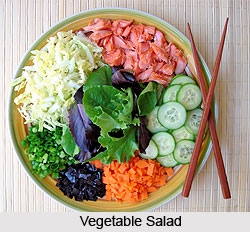 Indian food is all about variety and is an example of ancient tradition. The cuisine of the country is characterized by elaborate cooking techniques and the use of expensive ingredients. Indian cuisine was introduced to a splendid assortment during the colonial period. The colonial period introduced European cooking styles to India exhibiting British Influence on Indian Food. In that period, flexibility and diversity was introduced to the cuisine of India. The English brought not only food but also introduced various beverages. The English brought whisky to India and tea prepared with an assortment of spices such as ginger, nutmeg, cinnamon, cloves, and licorice.
Indian food is all about variety and is an example of ancient tradition. The cuisine of the country is characterized by elaborate cooking techniques and the use of expensive ingredients. Indian cuisine was introduced to a splendid assortment during the colonial period. The colonial period introduced European cooking styles to India exhibiting British Influence on Indian Food. In that period, flexibility and diversity was introduced to the cuisine of India. The English brought not only food but also introduced various beverages. The English brought whisky to India and tea prepared with an assortment of spices such as ginger, nutmeg, cinnamon, cloves, and licorice.
Influence of British on Indian Food
British Influence on Indian Food makes a spicy display. British cooking offers variety and thus gourmet Indian food are typically associated with the food cooked in the courts of Indian royalty during the British era. British convinced an influence of the Christian religion in Indian kitchen.
 British food is termed as Anglo-Indian food and the present society reflects its presence. A wide assortment of food such as English pork chops which are marinated in spices and chillies, soups and salads became the part of the Indian menu as incorporated by the British.
British food is termed as Anglo-Indian food and the present society reflects its presence. A wide assortment of food such as English pork chops which are marinated in spices and chillies, soups and salads became the part of the Indian menu as incorporated by the British.
Moreover, the coming of the British initiated the consumption of curries that were more watered down and are eaten with a bit of rice. In addition to that salads are lightly cooked vegetables mixed with some spices, vinegar, or yogurt. Furthermore, various English snacks including sponge cake, lemon-curd tartlets, and cucumber sandwiches are the other favourites of the British and their contribution to the Indian sub continent.
Influence of British on Eating Style
By the time the English had left India, each state of the country exhibited British Influence on Indian Food. Indian cooking style mostly depended on the British pattern. Additionally, British influence brought about an essential change in the Indian kitchen. The transformation can be considerably seen as dining table replaced the kitchen floor as the place to eat at and porcelain replaced the banana leaf as the utensil to eat. The concept of knives and forks was introduced as western utensils. To this day, influence of the brutish cooking style significantly mesmerised the Indian culinary.




















